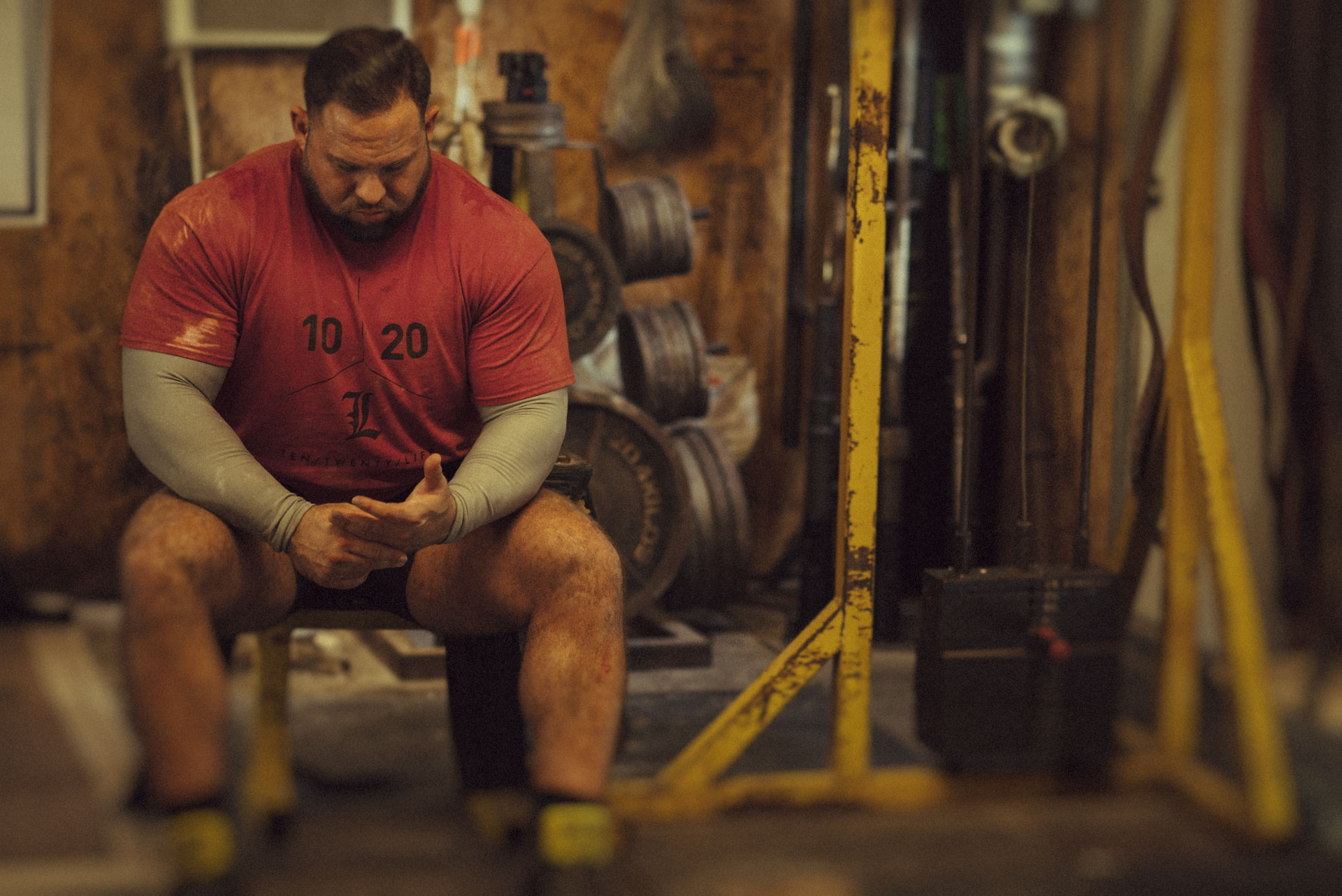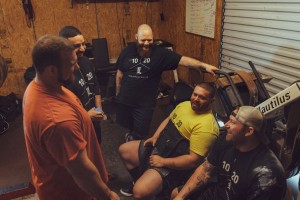
07 Aug Is the Juice Worth the Squeeze: When to shut down a training session, reboot and come back the next day
By Brian Carroll
We’ve all had them – training days that start off wrong, feel wrong and everything just feels off and get even worse once we start to get into the meat and potatoes (the important stuff) for the day. Some days things just won’t go right and it feels bad. Even worse, you could be risking an injury or re-injury if you are to push it.
[wa-wps]
But here’s the million dollar question: When is the right time to push through and when is it appropriate to shut down and quit for the day and cut our losses and regroup? I can’t say for certain one particular indicator that you must ALWAYS follow, unless you are simply in real pain – and something hurts BAD. I’m not talking about something kind of hurting, but being in serious pain. If you are injured, you shut it down, no questions asked. There is a big difference in being a little uncomfortable and in pain. It’s much better to take a day or even a week or two off than to deal with six months off or more dealing with a real injury.
As pretty much all of the best in a given field should answer most questions – maybe, depends and follow up with more questions… as there are so many different scenarios and variables in the strength game. But this is what I always say in pretty much all aspects of life: the juice has to be worth the squeeze, no matter what. The benefits MUST outweigh the potential risks & hazards, pros and cons list etc.– it basically needs to be worth it for you in not just the short term but the long term. Remember, the life in 10/20. You have to live with this body for (hopefully) many years after you are done lifting weights.
What can you do?
The key here is knowing your mind, body and where you need to be at this particular time in training because it does matter. Let’s face it, some days you just won’t have it mentally and or physically – we are all human, but knowing yourself and when to shut it down and when to push it is key. Take more risks, you’ll see more injuries, it’s just simple math – Let’s be real here – it’s true. And I’m not talking about being a little bit lazy or unmotivated… I’m talking about straight up not feeling strong, feeling off all together and NOT locked in on a particular day – not having it in general. You will have this from time to time, I don’t care who you are, everyone will have bad days in training – such is life.
Just simply quitting or being lazy is not at all what I’m referring to in this article, I’m talking about being all in, looking forward to the training day, doing all the right things outside the gym and simply having to decide on a whim whether you have it OR NOT. Anyone who’s competed for anything great knows that some days you just want have it.
Sometimes things are happening that we are not totally aware of from starting to get sick and not being aware, to stress mounting, to cumulative overtraining/CNS overstimulation to personal life stuff that can all sneak up on you in a hurry and mess you all up. One little bump in the road can literally throw off a whole training week but if you are in tune with your mind body and programming, you can keep this mitigated. The key is being in tune with your body, experience and having a coach/coaches in the gym that know you and what you should look like. Feedback is huge.

On any given day, this can actually be the difference of simply coming back the next day or week, or ending up on the surgery table. We all know the requirement mind & body connection to be our best and some days it’s best to shut it down when it’s not clicking.
Phases of training are so important
We hammer home phases in 10/20/Life training because in many cases, this is the most important factor to consider especially if you are out of time and need to finish up training in a good spot or you are simply in the offseason and sessions like this aren’t quite as critical. This is why it’s important to plan and have priorities in life coordinating at all times when possible. It can get very messy if the different phases of training of combined, mixed up or confused meaning that if you don’t have your priorities in order for competition training and haven’t taken care of distractions, vacations etc. then you are missing out on a real good way of having a life outside of training and keeping important people happy in your life.
Offseason – much more flexibility
This is the time that training doesn’t have to be so ‘on point’ and will allow a lot more flexibility in training, less intense overall, attacking weak points and the sense of urgency is not like you would have in the in season or pre contest/peaking phase. This is the time to travel, have fun in other avenues, let training take more of a ‘back seat’ as You have much more wiggle room on days like this since a comp is not near. Days that are going awry quick in the offseason will be more forgiving when shutting it down and stopping a session for mental, physical or other reasons. You usually won’t have to revamp your next 2-5 weeks in the offseason either due to a bad day. Even missing some training here and there won’t be the end of the world, so shutting it down in some cases isn’t even remotely a big deal in the offseason.
Precontest – much more locked in and time sensitive
On the contrary, this is a time where time is of the essence and you only have a limited amount of sessions to peak for your comp, so making it a habit of just shutting down and starting over is NOT a good idea and should be a last resort. This is the time where you hard work come to fruition and is capitalized where things have to be more controlled overall and you must limit the variables of travel, vacation and any other distractions, interests or hobbies kept to a minimum to keep the chances of having shitty days very small. Shutting it down on this day will sometimes mean that you simply can’t come back the next day because you already pushed it too much on this day and or 1. You don’t have enough help to do the session over the next day or 2. You are going to be physically not ready for the session the next day and will have to potentially revamp some of your training plan over the coming few weeks.
Meets – this is the day you put all the hard work in
I have shut it down in 3 meets in many years of competing – all three were going into the deadlift and I was facing a potential injury in all three; 2007, 2014 and my last meet, May of 2016. Each time I weighed out all the pros, the cons, tested my body in a few different ways and really evaluated the whole situation. Each time I did decide to shut it down, it was not HARD to do so, but it was a blow to my ego. I will say this, each time it’s easier to do. Why? Because you know you made the correct choice and this comes from knowing if you are simply being afraid, or if you really know that something is off and know that you just avoided a seriously bad spot. In each case, the juice simply wasn’t worth the squeeze. I stand by this 100% and my choices. Regret is a bad thing, but luckily erring on the side of caution has not been one of them.
It’s not easy and I’m still learning about myself all these years of competing
Nothing comes easy without putting time in and learning the good, the bad and the ugly. Experience is the greatest teacher in life, right? I don’t believe there is ANY substitute for experience, especially when it comes to lifting and strength. Over time, you should start to be in tune with your body and know what you can expect to get out of it with all the variables that this life throws at us. You should have routines and schedules that should allow some indication for predictability going into the most important training sessions. This is why it’s very important to know the difference between being a pussy and being smart as I hammer home in 10/20/Life. You have to decide if you are really beat down, don’t have it mentally and more than not ‘in it’ on this day or if you are just talking yourself out of a lift. This is a really big thing that lifters have to battle day in and day out – your mental game. Your mind will play with you at times as feelings aren’t always real.
 What do you mean?? Feelings… why are you getting weird and sappy on me?
What do you mean?? Feelings… why are you getting weird and sappy on me?
Easy – how many times have you said – man I feel great today and have nothing go well and the sessions falls apart faster than you ever could have imagined and you end up kicking the dog when you get home from such a shitty day training? On the contrary, how many times have you felt crappy, everything heavy warming up but then suddenly it clicks and then you are having one of the best training sessions of your life, PR on things you had no idea you had in the tank and overall have one of the best lifting days ever. This is why all feelings aren’t always real and the power of the mid. Just because you feel a certain way going into a lifting session, warming up and the like does NOT automatically dictate what kind of a session you are going to have. It could all be in your head – get your head straight.
What it comes down to is mentality in most cases
I get it – some days you just don’t have it mentally and or physically. I read long ago that Dorian Yates would sometimes start a workout and if it didn’t feel right, shut it down and go home, then reboot the next day when he was in the right frame of mind. I 100% agree with doing this especially if you can afford the mulligan and start over the next day. I actually did this last year at LowCountry Strength in Charleston, SC while hosting a 10/20/Life Seminar. I had a crappy session on Friday where nothing went right, top to bottom it all fell apart to crap. I squatted bad, ended up shutting it down and going over to pull and that was crap too, so I quit for the day. Mentally, physically -the whole 9. I got very angry about this and mulled over it for a couple of hours, maybe less, then decided I was going to redo the day on Saturday. Those that were around me, know I was in a very ‘special’ place at this time and I channeled my frustration into motivation for the next day and even squatting back to back days. This wasn’t all that easy but I had a really good squat session the next day. I was a month out from a comp, and just made up my mind that I needed a good training session and made it happen. My mentality was what carried me.
To wrap up…..
At the end of the day, you have to be able to access your overall position, mind and body and be aware of when to push it and when to back off. It’s one thing to have a plan, but when real world variables come into play, things can change in a hurry. This comes with time under the bar and in the weight room, trial and error and simply doing things the wrong way. Sometimes, you have to tuck your chin and go in harder, sometimes you need to cut your losses and shut it down. One of the greatest gifts anyone can have and or develop is knowing their body and what they are capable of, when to floor it and when to let off the accelerator. Keep this in mind the next day you are in the gym and are feeling off – ask yourself “am I really off, or am I being a pussy”.
Get the 10/20/Life E-Book HERE
Photo Credits: Trey Vollmer of Vollmer Visuals
Brian Carroll
Latest posts by Brian Carroll (see all)
- Brian Carroll Coaches the Birddog - April 24, 2024
- Protected: -Header Image Post Template 2024 - April 18, 2024
- Brian Carroll X Professor Stu McGill full interview 2024 - April 16, 2024










Sorry, the comment form is closed at this time.